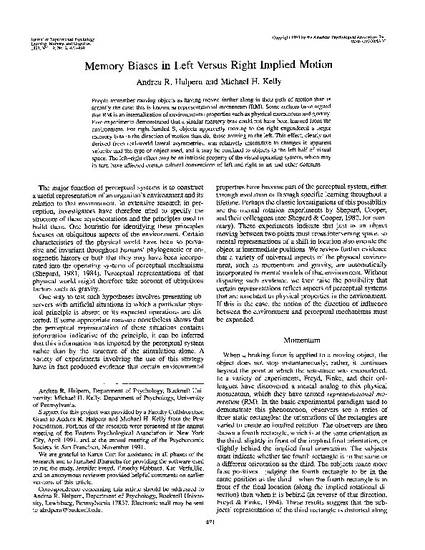
People remember moving objects as having moved farther along in their path of motion than is actually the case; this is known as representational momentum (RM). Some authors have argued that RM is an internalization of environmental properties such as physical momentum and gravity. Five experiments demonstrated that a similar memory bias could not have been learned from the environment. For right-handed Ss, objects apparently moving to the right engendered a larger memory bias in the direction of motion than did those moving to the left. This effect, clearly not derived from real-world lateral asymmetries, was relatively insensitive to changes in apparent velocity and the type of object used, and it may be confined to objects in the left half of visual space. The left–right effect may be an intrinsic property of the visual operating system, which may in turn have affected certain cultural conventions of left and right in art and other domains. (PsycINFO Database Record (c) 2016 APA, all rights reserved)
Available at: http://works.bepress.com/andrea_halpern/78/
